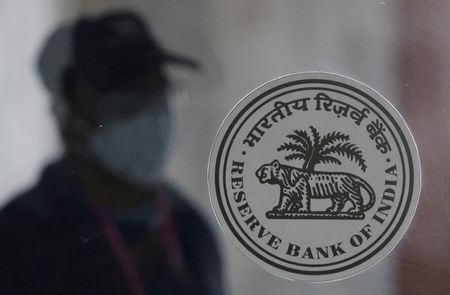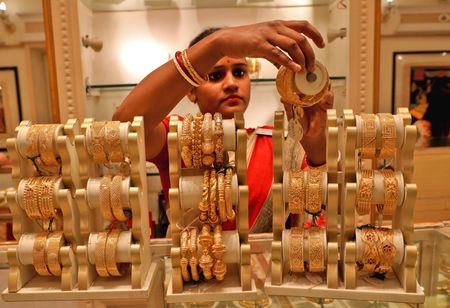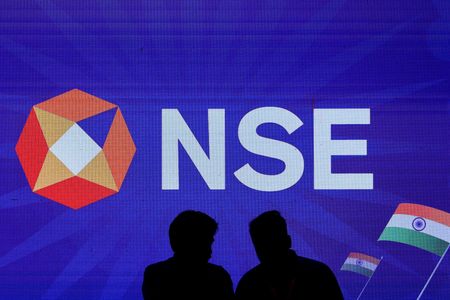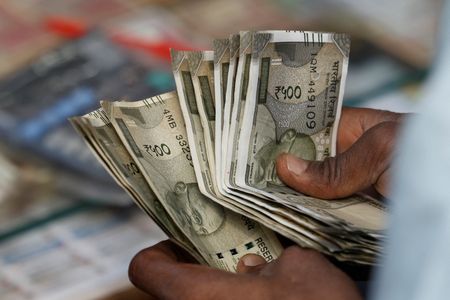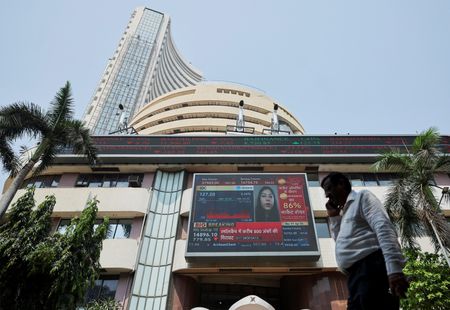(Reuters) -The Reserve Bank of India (RBI) reduced its key repo rate on Friday for the first time since May 2020, aiming to provide stimulus to the sluggish economy, which is projected to grow at its slowest pace in four years during the current fiscal year.
The Monetary Policy Committee, which consists of three RBI and three external members, cut the repo rate by 25 basis points, as expected, to 6.25%, after having kept the rate unchanged for 11 consecutive policy meetings. COMMENTARY
SHISHIR BAIJAL, CHAIRMAN AND MANAGING DIRECTOR, KNIGHT FRANK INDIA, MUMBAI
“We hope that interest rate cuts will be passed on to consumers, making home loan rates more attractive. This, along with the previously announced tax incentives, should stimulate residential demand across various price brackets, especially in the under 5-million-rupee category, which has seen a persistent drop in demand.” RADHIKA RAO, SENIOR ECONOMIST, DBS BANK, SINGAPORE
“The RBI’s monetary policy committee voted unanimously for the rate cut, adopting a cautious view on growth, while winter disinflation in food is expected to mitigate risks to price stability. Recent rupee depreciation was not a hurdle for the policymakers, with intervention tools likely to be tapped to defend the currency.
“This positions the RBI alongside regional central banks, which have prioritized domestic concerns, viewing volatility in their currency and bond markets as largely influenced by global factors.
“The MPC refrained from an outright dovish signal by maintaining a “neutral” stance.”
ANIRUDH GARG, PARTNER AND FUND MANAGER AT INVASSET PMS, MUMBAI
“For the auto sector, the rate cut could have a positive impact by making vehicle loans more affordable, which may encourage consumer demand, particularly in the passenger and two-wheeler segments.
“Additionally, improved liquidity conditions could support credit flow to businesses, benefiting automakers and dealers.
“However, factors such as higher import costs due to currency depreciation and potential inflationary pressures could influence pricing and profitability in the industry.” SACHCHIDANAND SHUKLA, GROUP CHIEF ECONOMIST, LARSEN & TOUBRO, MUMBAI
“Given the long and variable lags, the rate reduction avoids the risk of falling further behind the curve and buys some growth insurance in hugely uncertain and volatile global environment.” SAKSHI GUPTA, PRINCIPAL ECONOMIST, HDFC BANK, GURUGRAM
“The governor emphasised that the central bank’s approach to regulations will be balanced, considering both the benefits and costs of any regulations, while allowing sufficient time for implementation.
“However, a clear communication on the implementation of the new LCR (Liquidity Coverage Ratio) norms remained absent.
“We expect the central bank to front-load its rate cuts and deliver another rate cut in the April policy.” DEVENDRA KUMAR PANT, CHIEF ECONOMIST, INDIA RATINGS AND RESEARCH, GURUGRAM
“The rationale for the rate cut is a sustained decline in retail inflation, based on the assumption of no supply-side shocks and a favourable rabi output. The temperature in January and February has been higher than normal and this may have an impact on the rabi output and inflation.
“The RBI has reiterated its stance of provision of durable liquidity. The impact on growth would be more from the decline in inflation rather than the rate cut.” GARIMA KAPOOR, ECONOMIST, INSTITUTIONAL EQUITIES, ELARA SECURITIES, MUMBAI
“The policy tone was neutral, but the governor’s remarks on the macro-prudential draft guidelines suggest that the current RBI dispensation is likely to take a more pragmatic approach to the implementation.
“The assurance of liquidity provision was also comforting and suggests that measures are likely to continue through OMOs and swaps.” GAURA SENGUPTA, INDIA ECONOMIST, IDFC FIRST BANK, MUMBAI
“The decision signals a gradual shift towards less-restrictive monetary policy, as inflation is expected to align with target levels.
“We see limited downside risk to the RBI GDP estimate of 6.7% for FY26. On the liquidity front, though no new measures were announced, we expect the RBI to continue to infuse durable liquidity via OMO purchase and USDINR buy-sell swap. As per our estimate, the RBI will need to infuse nearly 3 trillion rupees ($34.30 billion) of durable liquidity this year to ensure effective transmission and support credit growth.
“We expect the rate-cut cycle to be shallow and a 25-bps reduction in April.”
DEEPAK AGRAWAL, CIO DEBT AT KOTAK MAHINDRA AMC, MUMBAI
“The central bank has guided to ensure sufficient durable liquidity in the system and will take pro-active measures for the same. The rate cut, combined with assurances on liquidity, should help boost consumption and revive growth.
“We maintain our expectations of an incremental 25 bps rate cut until June 2025.” ANUJ PURI, CHAIRMAN, ANAROCK GROUP, MUMBAI
“The RBI’s decision to reduce the repo rate by 25 bps, combined with the recent taxation benefits announced in the union budget, is expected to positively impact the housing sector.
“As such, it is undeniably a major boost to the homebuyers, particularly for affordable housing buyers. Many first-time homebuyers who had been hesitating to take the plunge are likely to make their move now as home loan rates will reduce – as long as banks pass on the key benefits to buyers.
“That said, the rate cut may be less effective by rising property prices if inflation remains as high as it is now. Also, it remains to be seen if banks pass on the full benefit to borrowers in a timely and seamless manner.” KUNAL KUNDU, INDIA ECONOMIST, SOCIETE GENERALE, BENGALURU
“In light of the budget announcement on lower tax burden on households, a rate cut was appropriate to support domestic demand, which is clearly on a weaker footing.
“With both domestic and global factors impacting India’s economic activity, a rate cut now can also act as an insurance against the economic impact of continued uncertainty.
“That said, we do not see it as a panacea that can push the growth rate meaningfully upwards. Central to this are multiple reform measures, some of which we had hoped to see in the budget but were notably absent.”
BOMAN IRANI, PRESIDENT, CONFEDERATION OF REAL ESTATE DEVELOPERS’ ASSOCIATIONS OF INDIA, MUMBAI
“The RBI’s repo rate cut complements recent budget measures designed to boost spending and stimulate economic growth. This monetary policy was imperative, especially after the recent 50-basis-point cut in the Cash Reserve Ratio (CRR), which has already injected significant liquidity into the banking system.
“While the current cut may have a limited direct impact, we anticipate that a further rate reduction in the next MPC meeting will provide stronger impetus to overall demand, accelerating housing sales, particularly in the mid-income and affordable segments.”
UPASNA BHARDWAJ, CHIEF ECONOMIST, KOTAK MAHINDRA BANK, MUMBAI
“The MPC’s decision to cut repo rate by 25 bps and maintain a “neutral” stance is completely in line with our expectations. The softening growth and inflation outlook has provided room to monetary easing. The RBI will need to monitor liquidity conditions more closely to ensure liquidity stance remains in sync with the policy stance.”
(Reporting by Meenakshi Maidas, Nishit Navin, Bharath Rajeswaran, Anuran Sadhu, Kashish Tandon, Hritam Mukherjee, Manvi Pant in Bengaluru, and Siddhi Nayak in Mumbai; Compiled by Indranil Sarkar; Editing by Sherry Jacob-Phillips)

